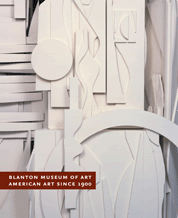Here are a few art books I've read this year. Most of them are several years old--I tend to prowl the shelves of used-book stores like Kaboom.

The Map and the Territory by Michel Houellebecq. A very interesting novel about a contemporary artist, Jed Martin. The novel starts with Martin destroying his latest painting, Jeff Koons and Damien Hirst Divide the Art Market. It was to be the last painting of a series depicting people in the context of their professions. This scene is followed by a flashback that describes Martin's upbringing, education, and progress as an artist. What I liked very much was that Martin was thoroughly modern. I know a lot of older painters who look down their noses at non-traditional mediums. But people of Martin's generation see photography (and computer programs like Photoshop) as being as legitimate as painting and fundamentally interchangeable with painting. So Jed goes from being a pure photographer to being a photographer who digitally manipulates his images to being a painter. (Later he does video with the aid of custom-designed software.) In his mind, he is adjusting his mediums in response to changes in subject matter, which have different requirements.
But the novel surprises you suddenly when Michel Houellebecq himself becomes a character--and a major one. I won't write more about it lest I spoil the plot. The focus is Martin and his parallel life's journey and artistic journey. I'd like to know what artists make of him. So often when an artist is depicted in a film or a book, the depiction rings false. But in The Map and the Territory, I was convinced.

Everybody Was So Young: Gerald and Sara Murphy, a Lost Generation Love Story by Amanda Vaill. I read Calvin Tompkins' Living Well Is the Best Revenge, which was written while Gerald and Sara Murphy were still alive. It's good, but Everybody Was So Young is better--it carries them past their golden decade in France to the more difficult 30s and 40s until their deaths. (That golden decade was fictionalized in Tender Is the Night by F. Scott Fitzgerald--the protagonists, Dick and Nicole Diver, are loosely based on the Murphys.) Murphy was a serious amateur painter whose work is now rightly considered among the best American painting of the 20th century. But his painting was not the couple's primary gift to culture--it was being the hosts for some of the greatest writers and artists of the 20th century. When I imagine how an artist gets to be great, I first think of the artists themselves, and then about the gate-keepers and promoters--the gallery owners, the editors, the curators, the impresarios, etc. But the Murphys were not gatekeepers, and yet they contributed much by virtue of their enthusiasms and friendships to literature, to painting, and to ballet. By covering their post-"Lost Generation" years, Vaill lets us see the tragedies of their lives alongside the golden peak.

American Art Since 1900 edited by Annette DiMeo Carlozzi and Kelly Baum. Don't be mislead by this title. The American art in this book is all chosen from the collection of the Blanton Museum of Art at the University of Texas at Austin. Like most small or medium-sized museums (and like some large ones), the Blanton's collection has its idiosyncrasies. In this case, the big idiosyncrasy is that a majority of the post-war American art in their collection was donated by a single collector, novelist James Michener. Michener was a major collector who bought 297 works between 1959 to 1975 which he subsequently donated to the Blanton. He had a pretty good eye and advanced tastes--quite surprising given that Michener is the quintessential middle-brow novelist. The Blanton really lucked out. He only bought paintings, though, which leaves out a lot of important work, especially in the 60s. And he mostly avoided Pop art (one Robert Indiana painting). But he bought lots of abstract art by key artists: Franz Kline, Hans Hoffman, Joan Mitchell, Robert Motherwell, Sam Francis, Brice Marden, etc. By basing so much of their collection on Michener, it means that the Blanton has no Warhol, no Rauschenberg, no Johns, and many others of that generation. (At least I assume they didn't have work by these artists--if they did, they would have included it. This show dates from 2006, so theyt may have filled in their collection subsequently.) The other idiosyncrasy is that there is a lot of art by Texas artists here. This is not art that would normally be included in a survey exhibit of 20th century American art. That said, I'm glad for the inclusion--especially Jerry Bywaters' Oil Field Girls. Each work gets its own essay, and there are longer essays in the back by such writers as David Hickey and Raphael Rubenstein. There is also an amazing essay by Robert Kushner about Michener's collecting habits, where he critiques what Michener bought year by year.

No. 1: First Works by 362 Artists by Matthew Rosenzweig and Francesca Richer. This book has an intriguing concept. They asked artists the question, what do you consider your first work of art? 362 answered. Some gave them the oldest work from their childhood. A few gave them the first work they made after they had formed the ambition of being an artist (often a work from adolescence). Most gave them the first work that they considered a mature work--work that was no longer the work of a student, or the work of a young derivative artist. With 362 artists, working an a very wide variety of media, and from several generations, you get an interesting view of art today, as well as a sense of how artists of different generation and different countries view the process of artistic maturation.




No comments:
Post a Comment